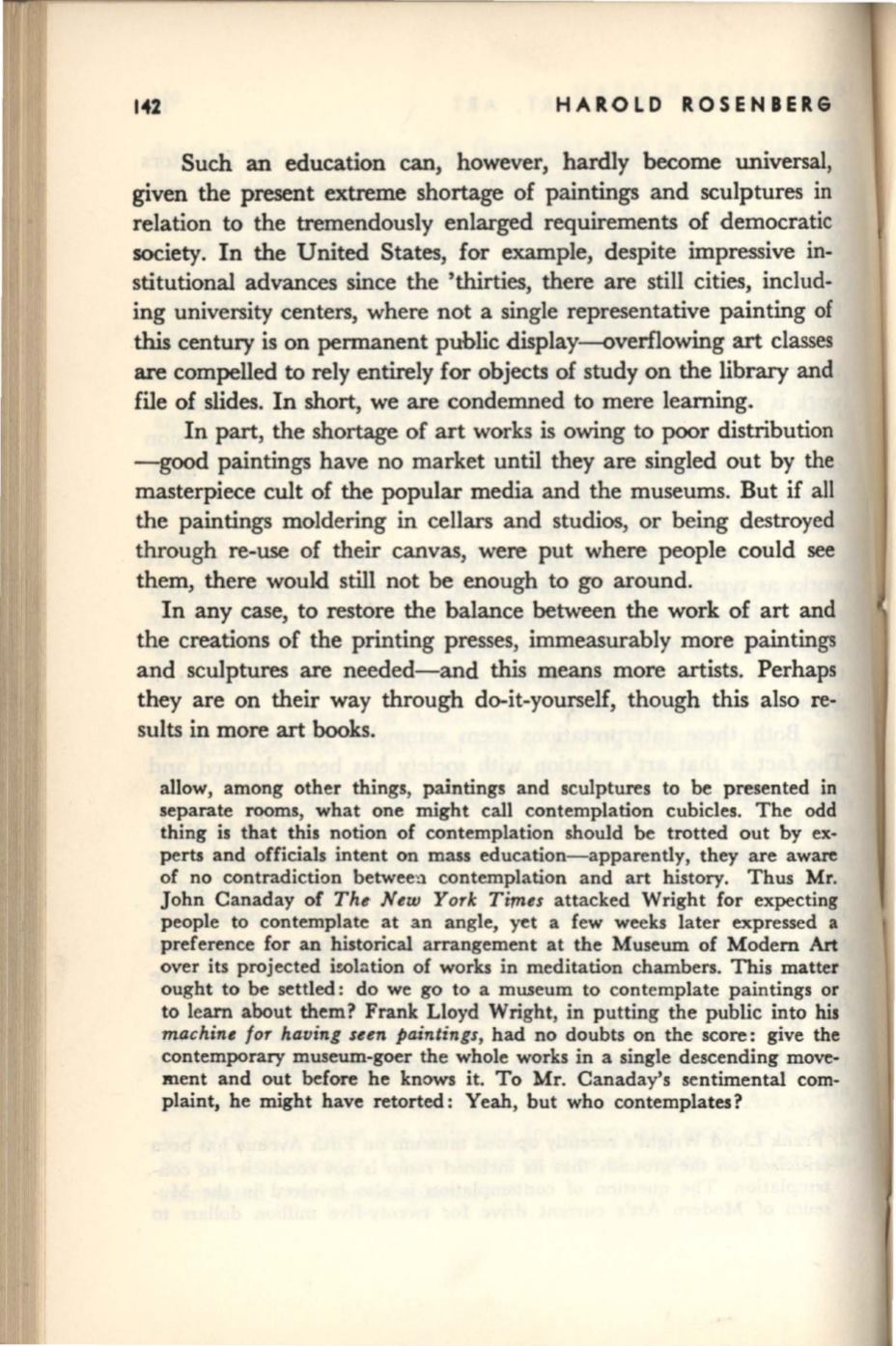
142
HAROLD ROSENBERG
Such an education can, however, hardly become universal,
given the present extreme shortage of paintings and sculptures in
relation to the tremendously enlarged requirements of democratic
society. In the United States, for example, despite impressive in–
stitutional advances since the 'thirties, there are still cities, includ–
ing university centers, where not a single representative painting of
this
century is on permanent public display-overflowing art classes
are compelled to rely entirely for objects of study on the library and
file of slides. In short, we are condemned to mere learning.
In part, the shortage of art works is owing to poor distribution
-good paintings have no market until they are singled out by the
masterpiece cult of the popular media and the museums. But if all
the paintings moldering in cellars and studios, or being destroyed
through re-use of their canvas, were put where people could see
them, there would still not be enough to go around.
In any case, to restore the balance between the work of art and
the creations of the printing presses, immeasurably more paintings
and sculptures are needed-and this means more artists. Perhaps
they are on their way through do-it-yourself, though this also re–
sults in more art books.
allow, among other things, paintings and sculptures to
be
presented in
separate rooms, what one might call contemplation cubicles. The odd
thing is that this notion of contemplation should be trotted out by ex–
perts and officials intent on mass education-apparently, they are aware
of no contradiction between contemplation and art history. Thus Mr.
John Canaday of
The New
YOTk
Times
attacked Wright for expecting
people to contemplate at an angle, yet a few weeks later expressed a
preference for an historical arrangement at the Museum of Modem
Art
over its projected iwlation of works in meditation chambers. This matter
ought to be settled: do we go to a mweum to contemplate paintings or
to learn about them? Frank Lloyd Wright, in putting the public into his
machine
fOT
having seen paintings,
had no doubts on the score: give the
contemporary museum-goer the whole works in a single descending move–
ment and out before he knows it. To Mr. Canaday's sentimental com–
plaint, he might have retorted: Yeah, but who contemplates?


